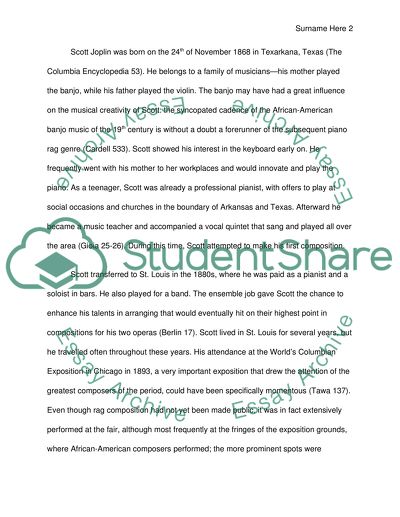Cite this document
(“Artist Scott Joplin Research Paper Example | Topics and Well Written Essays - 1500 words”, n.d.)
Retrieved from https://studentshare.org/music/1478559-artist-scott-joplin
Retrieved from https://studentshare.org/music/1478559-artist-scott-joplin
(Artist Scott Joplin Research Paper Example | Topics and Well Written Essays - 1500 Words)
https://studentshare.org/music/1478559-artist-scott-joplin.
https://studentshare.org/music/1478559-artist-scott-joplin.
“Artist Scott Joplin Research Paper Example | Topics and Well Written Essays - 1500 Words”, n.d. https://studentshare.org/music/1478559-artist-scott-joplin.


